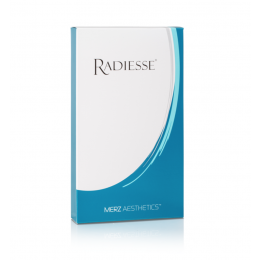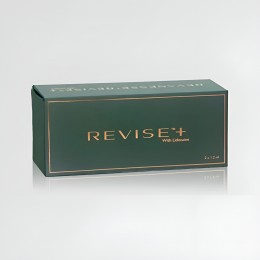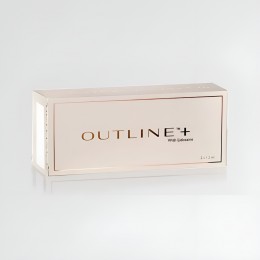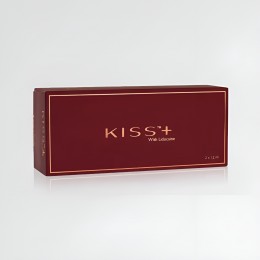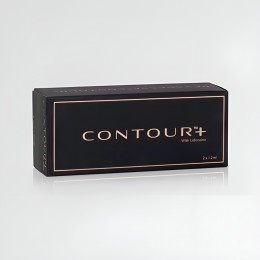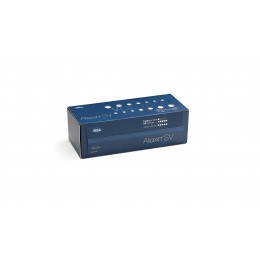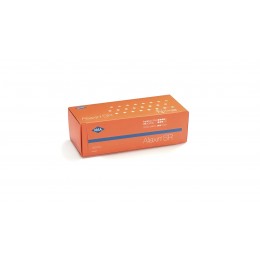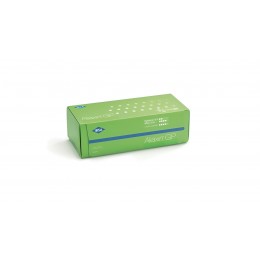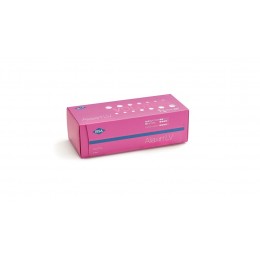Login Form
Registration
Profile Informations
Login Datas
or login
Dermal Fillers
Dermal fillers are a widely used solution in cosmetic medicine for restoring volume, enhancing facial features, and smoothing out wrinkles. This non-surgical treatment has become one of the most requested procedures globally, especially among patients looking for fast and natural-looking results. Unlike surgical facelifts, fillers offer immediate improvement with minimal downtime.
Buy premium dermal fillers online through Activa Derma's extensive catalog. Discover professional-grade solutions including hyaluronic acid, calcium hydroxylapatite, and poly-L-lactic acid formulations. Each injectable is meticulously chosen to deliver optimal patient outcomes, helping you provide transformative anti-aging treatments. Ready-to-use pre-filled syringes streamline your workflow and enhance treatment precision.
What Are Dermal Fillers?
Dermal fillers are gel-like substances injected beneath the skin to correct signs of aging or enhance facial features. They add structure, restore volume loss, and fill in wrinkles or folds. Common areas treated include the cheeks, lips, nasolabial folds, marionette lines, jawline, and under the eyes.
These injectable products vary in composition and longevity, allowing healthcare professionals to select the best option based on patient needs, skin type, and treatment goals. Buying dermal fillers online delivers complete treatment solutions in sterile, ready-to-inject packaging.
Common Uses of Dermal Fillers
Fillers can address a range of aesthetic concerns, including:
-
Volume loss due to aging
-
Static wrinkles and deep folds
-
Sunken cheeks and hollow temples
-
Thin or asymmetrical lips
-
Facial contouring (jawline, chin, nose)
-
Scarring, including acne scars
Understanding product specifications before ordering online ensures optimal inventory management. Review each filler's clinical indications and customize your procurement strategy to match patient demographics.
Many fillers are also used off-label in non-facial areas, including the hands and neck, for rejuvenation purposes.
Types of Dermal Fillers
Selecting the right dermal filler requires understanding each formulation's unique properties. Healthcare professionals must evaluate multiple factors when building their treatment arsenal, including patient demographics, desired outcomes, and injection techniques.
Several types of dermal fillers are available, each with its own benefits, consistency, and application techniques. The four most common categories include:
Hyaluronic Acid (HA) Fillers
HA is a substance that naturally occurs in the skin, contributing to hydration and volume. These fillers are biocompatible and biodegradable, making them a safe choice for most patients. Leading brands available through authorized distributors include:
-
Juvederm
-
Restylane
-
Belotero
-
Aliaxin
-
Hyacorp
HA fillers are often used on lips, nasolabial folds, tear troughs, and cheeks. Depending on the product and treatment area, results typically last 6 to 12 months.
Calcium Hydroxylapatite (CaHA)
CaHA fillers are thicker and more robust. They contain calcium microspheres suspended in a gel, providing longer-lasting results—usually up to 18 months. This type is ideal for deeper lines and areas requiring structural support, such as the cheeks and jawline.
Radiesse represents the gold standard in CaHA technology, accessible through certified medical suppliers and is also used for hand rejuvenation.
Poly-L-Lactic Acid (PLLA)
This synthetic substance stimulates collagen production, delivering gradual volume enhancement over several months. Commonly used in treating smile lines and facial volume loss, PLLA requires multiple sessions for full effect. Sculptra is the leading PLLA filler on the market.
Polymethyl Methacrylate (PMMA)
PMMA fillers consist of tiny microspheres suspended in a collagen gel. They offer a semi-permanent solution and are primarily used for deep folds, acne scars, and structural facial enhancement. Bellafill is a widely recognized PMMA filler.
How the Procedure Works
Depending on the areas treated, dermal filler treatments usually take 20 to 45 minutes. After a consultation and facial assessment, the practitioner may mark the injection sites and apply a topical anesthetic for comfort. Through using a fine needle or cannula, the filler is injected into specific layers of the skin or subcutaneous tissue.
Aftercare Instructions
Patients should follow these aftercare tips to maximize results:
-
Avoid touching or massaging the treated area for at least 24 hours.
-
Postpone intense physical activity and alcohol for 24–48 hours.
-
Refrain from applying makeup for the first 12 hours.
-
Apply cold compresses to reduce swelling.
-
Stay hydrated and avoid heat exposure for a few days.
How Long Do Dermal Fillers Last?
The longevity of results varies based on the type of filler, injection area, and individual metabolism. On average:
-
HA fillers: 6–12 months
-
CaHA fillers: 12–18 months
-
PLLA fillers: up to 24 months (with multiple sessions)
-
PMMA fillers: several years
Maintenance sessions can help extend the benefits and keep results consistent.
Who Should Not Receive Dermal Fillers?
While generally safe, dermal fillers are not suitable for everyone. Patients should avoid treatment if they:
-
Are pregnant or breastfeeding
-
Have active infections or inflammation near the injection site
-
Are allergic to any filler ingredients
-
Have bleeding disorders or are taking anticoagulants
-
Have a history of severe allergies or anaphylaxis
A detailed consultation helps ensure the treatment is safe and appropriate.
Risks and Side Effects
Mild side effects are common and temporary:
-
Swelling
-
Redness
-
Bruising
-
Tenderness
Rare but serious complications may include:
-
Allergic reactions
-
Infection
-
Vascular occlusion (blocked blood vessel)
-
Lumps or nodules under the skin
Seeing a trained and licensed injector reduces these risks significantly.
Buying Dermal Fillers Online
Licensed aesthetic professionals can access dermal fillers through established platforms like Activa Derma, featuring comprehensive product catalogs from leading manufacturers. Online procurement requires careful attention to::
-
Regulatory compliance and manufacturer certifications
-
Product authentication and batch tracking
-
Temperature-controlled shipping and storage protocols
-
Expiration date verification and inventory rotation
Is it safe to order online? Absolutely, when buying from established medical distributors like Activa Derma that maintain rigorous quality standards and cold-chain logistics.
Wholesale procurement offers significant advantages for high-volume practices. Bulk ordering typically provides substantial cost reductions and ensures consistent product availability. Activa Derma's wholesale pricing structure includes volume discounts and flexible ordering options for practice efficiency.
Most Popular Dermal Filler Brands
A few leading names dominate the market due to their safety, effectiveness, and brand trust:
-
Juvederm: Versatile range for different facial areas
-
Restylane: Known for natural-looking results
-
Sculptra: Excellent for collagen stimulation
-
Radiesse: Ideal for deeper facial folds and hand rejuvenation
-
Belotero: Great for delicate areas like under the eyes and lips
Why Patients Choose Dermal Fillers
Patients prefer fillers for their ability to:
-
Provide immediate, noticeable results
-
Require little to no recovery time
-
Offer personalized enhancements
Whether the goal is smoothing out folds or creating symmetry, fillers allow for tailored results that align with individual preferences.
Frequently Asked Questions
Is it safe to order dermal fillers online?
Online procurement is completely secure when working with verified medical suppliers like Activa Derma. Counterfeit products pose serious health risks, but established distributors guarantee authenticity through rigorous supply chain verification. Activa Derma maintains pharmaceutical-grade storage conditions and provides complete product traceability.
What are the advantages of wholesale ordering?
Wholesale procurement enables efficient practice management through reduced per-unit costs and consistent inventory levels. Professional distributors offer tiered pricing based on order volume, allowing practices to optimize their purchasing power while maintaining treatment quality.
What should I verify when ordering online?
Professional online ordering requires verification of distributor licensing, product authentication certificates, and proper cold-chain logistics. Ensure your supplier maintains regulatory compliance and provides complete documentation for each shipment.
How does bulk ordering benefit my practice?
Volume purchasing through wholesale channels provides significant cost advantages while ensuring consistent product availability. Professional distributors offer flexible ordering schedules and inventory management support for busy aesthetic practices.
To Sum Up
Dermal fillers continue to play a major role in modern aesthetic treatments. With proper technique and product selection, they offer a safe, effective, and minimally invasive option for patients seeking a refreshed appearance. Clinics can choose from various formulations and brands, ensuring that every patient receives a product suited to their needs.
When administered by qualified professionals, dermal fillers provide consistent outcomes with high satisfaction rates. Whether enhancing features or restoring youthful contours, these treatments remain a top choice for clients and practitioners.

